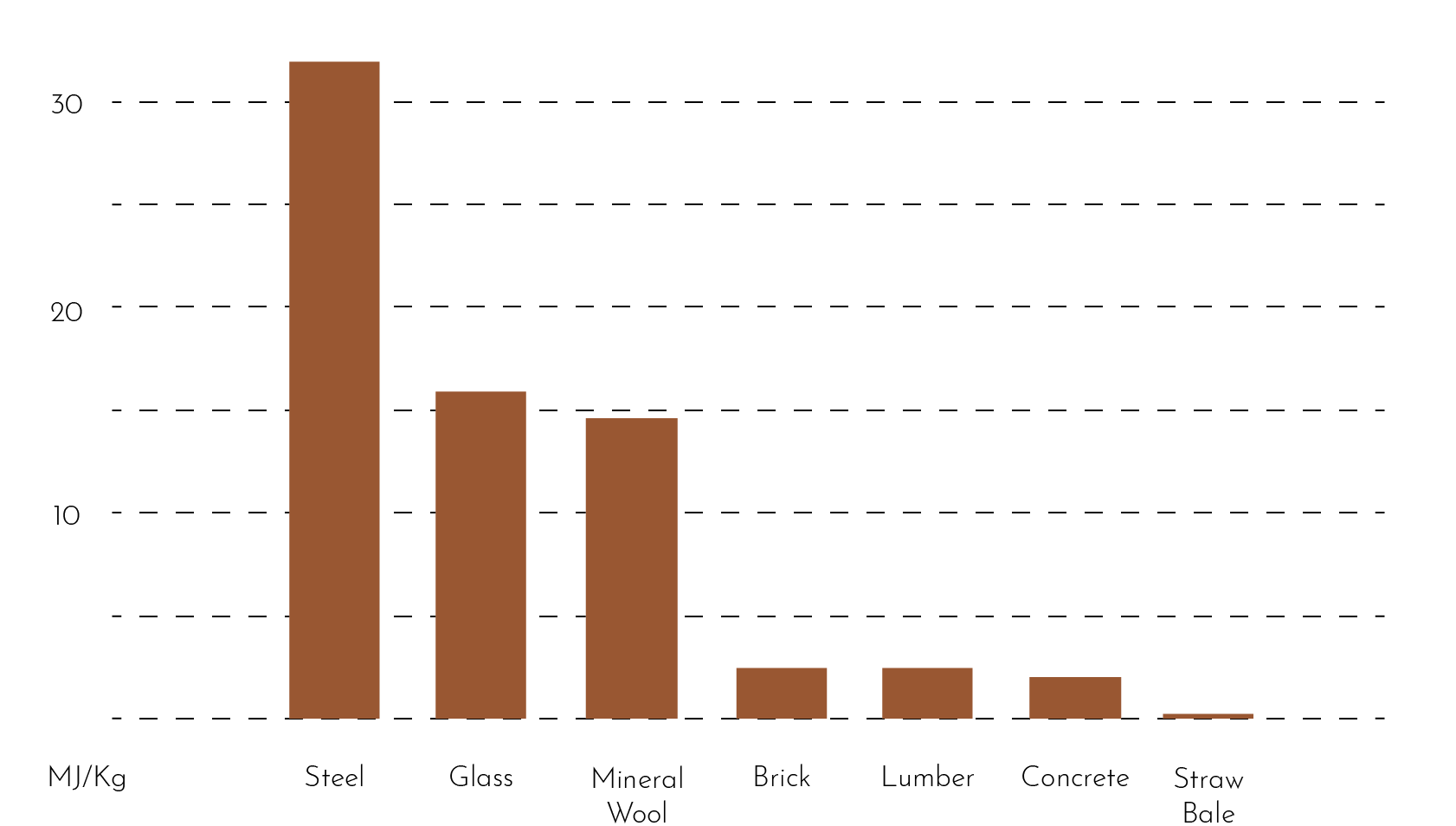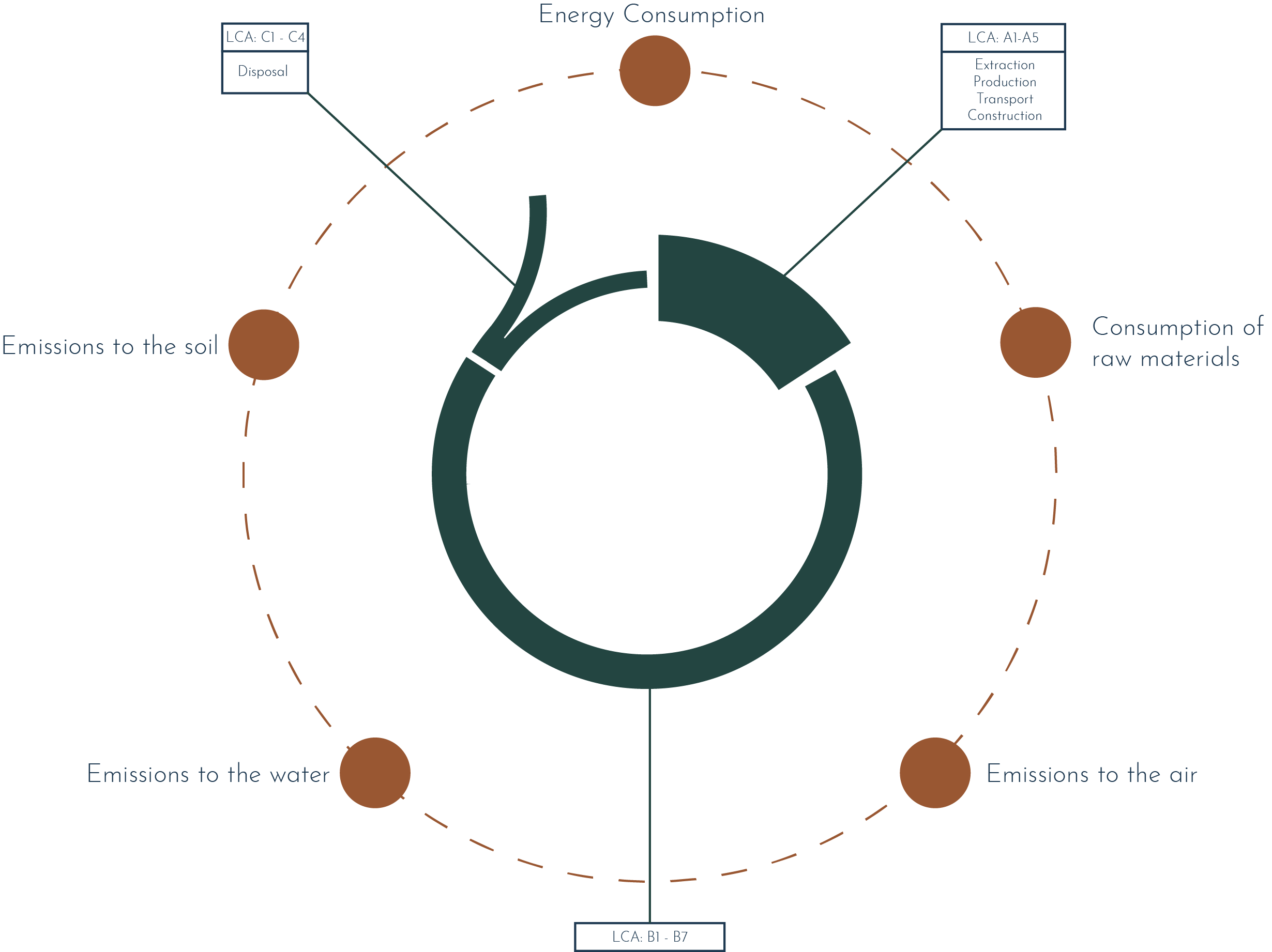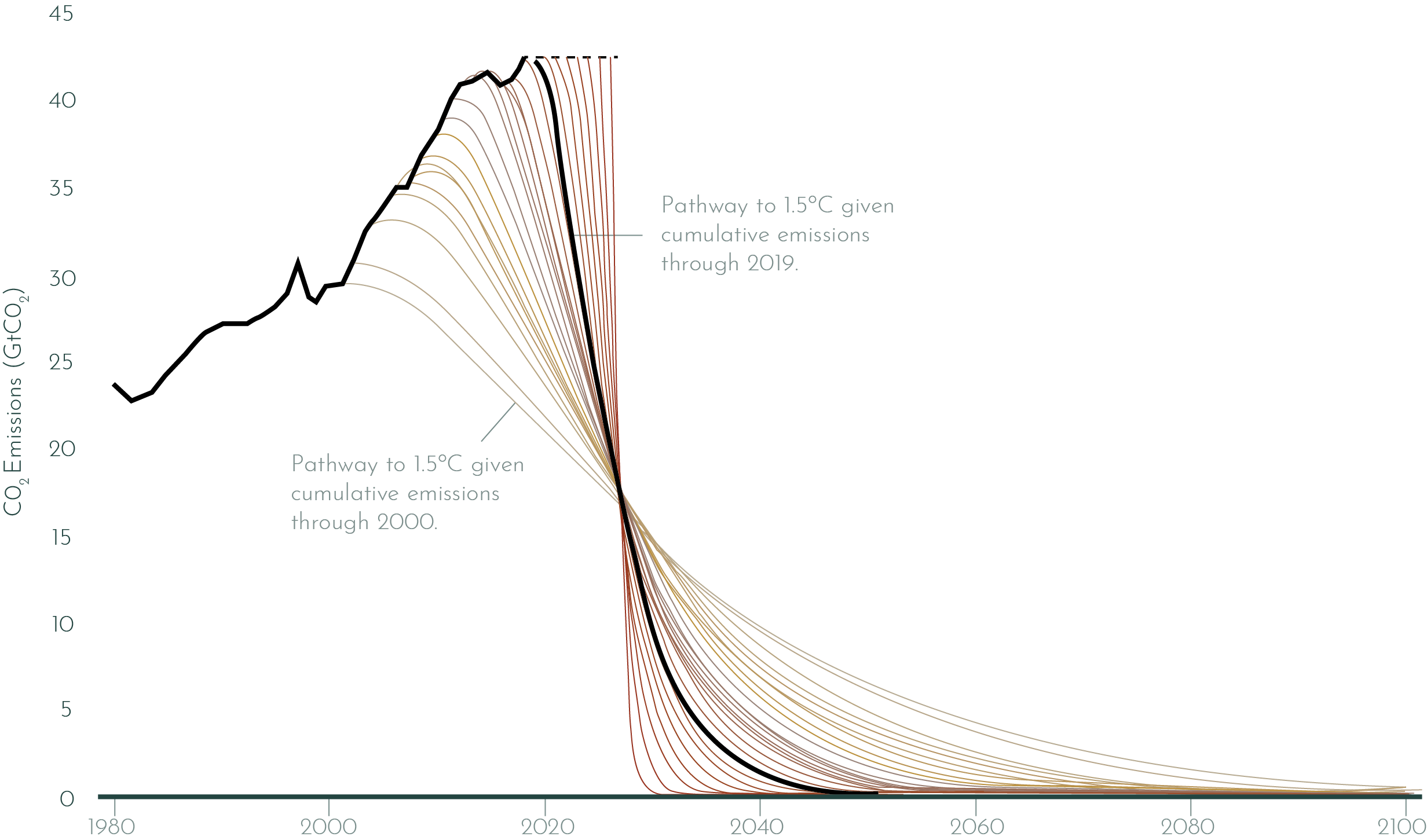Theoretical context
Urgency
The graph above is based on UNEP’s annual Emissions Gap Report and their latest prediction on what time there is left to lower the levels of greenhouse gas emissions in order to achieve the goals defined within the Paris Agreement and avoid irreversible consequences brought on by climate change.
The data shows that a drastic and immediate cut of greenhouse gas emissions is required as every year we fail to do so dramatically amplifies the efforts needed to keep us out of harm’s way and, consequently, the costs of doing so.
One could argue, given the data available, that we need to be radical and conceive buildings that initially emit far less greenhouse gases during their fabrication, even if they are efficient over time or that it is hard to achieve without re-thinking and looking beyond the most commonly used materials and methods of today.
The choice of materials with which we construct now stands out as the focal point with the most potential to curb green house gas emissions caused by construction and the abolishment of fossil based matter seems unavoidable.

Embodied energy
An important factor within assessing a building’s ecological impact is the concept of Embodied Energy, often called grey energy. It is defined as the amount of energy a component demands throughout its life cycle, from extraction, manufacture, transport, installation and disposal (Ece, 2018).
The Embodied Energy of materials is responsible for 84% of the buildings initial climate footprint (IVA, 2014). As an example, by using Low impact materials like straw instead of mineral wool, the embodied energy in conventional building insulation can be reduced by 85-90%

Environmental Consequences of a Building component over time.


